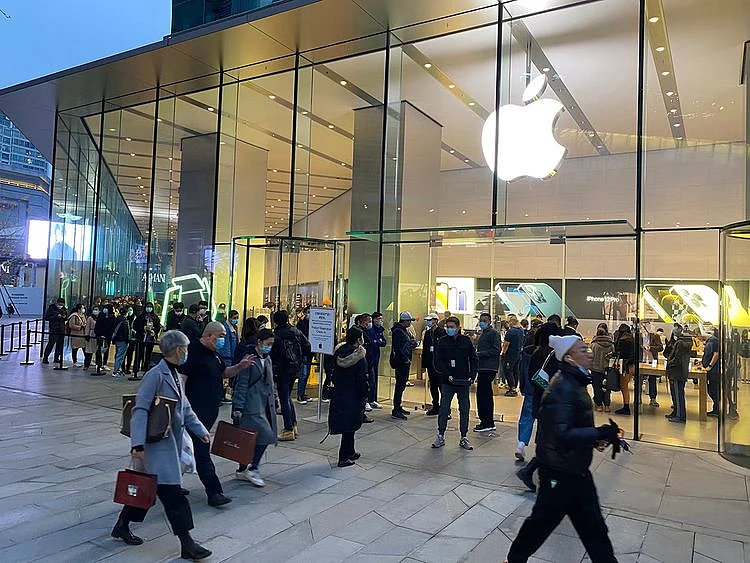Apple’s relentless rally puts $3 trillion market valuation in view
Apple briefly rose above $3 trillion in early 2022, but failed to close above the level

Apple Inc.’s rally in 2023 has brought it back to the brink of a historic threshold: a $3 trillion market valuation.
The stock has soared 35 per cent this year, adding nearly $690 billion in market value, as investors have flocked to the iPhone maker’s steady revenue and massive cash flows. The advance has put Apple within striking distance of its January 2022 record.
“In my career, I never envisioned a company of this size, but then I never envisioned a company capable of generating more than $100 billion in free cash flow in a year,” said Patrick Burton, a portfolio manager of the MainStay Winslow Large Cap Growth Fund, which owns nearly 4.5 million shares of the Cupertino, California-based firm, as of the latest data. “When you look at the underlying metrics, it’s understandable why Apple has done so well.”
Apple and other technology behemoths have been market standouts this year as investors have gravitated to companies with the biggest scale while staring down risks from a potential recession, bank failures and now a US debt-ceiling standoff. It’s a favorite stock for institutional investors, hedge funds, retail investors, and Warren Buffett.
The stellar performance has, however, led to an increased debate around Apple’s valuation. At 28 times projected earnings, the stock is in rarefied air for a technology firm whose revenue is expected to shrink this year, trading at a premium to its own history, as well as the market, according to data compiled by Bloomberg.
While Apple briefly rose above $3 trillion in early 2022, it failed to close above that level, and the peak marked the start of a downtrend that resulted in a 27 per cent drop that year as investors fled tech stocks amid soaring interest rates. Should Apple achieve the milestone, it would be the first to do so. Currently, at $2.76 trillion, it is bigger than the entire Russell 2000 index.
Favorite safety play
Apple’s results this month underlined the bull case. Both earnings and revenue were better than expected, thanks to a rebound in the iPhone and growth in its Services business. The company also raised its dividend and announced plans for $90 billion in stock repurchases.
That commitment to shareholder returns, coupled with the firm’s durable revenue streams, made Apple and other megacap tech stocks a favorite safety play earlier this year, when the collapse of Silicon Valley Bank led to turmoil in the banking sector. But now, amid expectations the Federal Reserve will start cutting interest rates as soon as July to stoke economic growth, investors are looking to it for its offensive, rather than defensive, characteristics.
“Apple is just as likely to perform well in a risk-on environment as a risk-off one,” said Sylvia Jablonski, CEO of Defiance ETFs. “You can’t expect 20-30 per cent returns from here, but I’d rather park my money here than in a Treasury. There is a lot of opportunity for growth even in a tough market, and it pays a dividend, buys back a tonne of stock, and has this incredibly strong balance sheet, all of which is attractive to investors.”
To be sure, Apple’s ever-increasing influence in major stock indexes means any reversal in the rally would pose a broader risk to markets. The shares represent nearly 7.5 per cent of the S&P 500 Index, a level that has marked a peak in recent years.
“When a company executes as well as Apple has, people may feel it is immune to risks,” said Sal Bruno, chief investment officer at IndexIQ. “Right now we’re seeing the positive side of it being the biggest weight, since it has delivered fantastic results and shown terrific strength, but whenever we’ve seen market concentration spike in the past, it hasn’t ended well. If it trips or there’s a sense it has gotten overvalued, there’s more risk for the market overall.”
Sign up for the Daily Briefing
Get the latest news and updates straight to your inbox
Network Links
GN StoreDownload our app
© Al Nisr Publishing LLC 2025. All rights reserved.